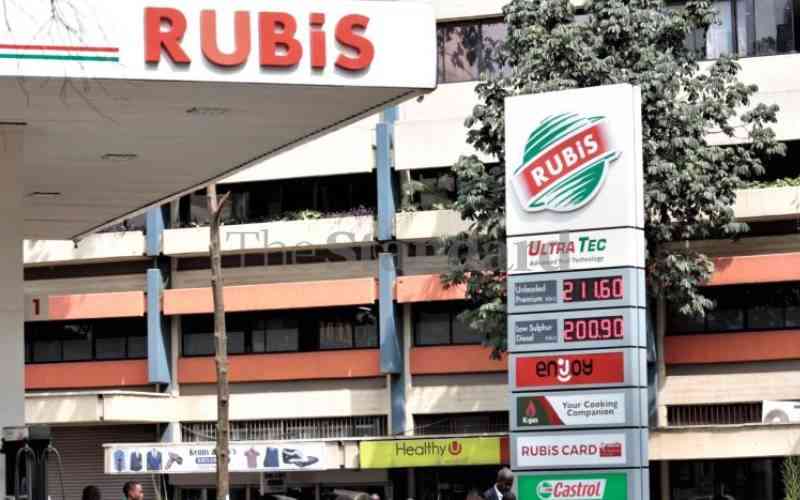By Morris Aron
In the depths of despair, there is always an opportunity, or so the saying goes.
Low-end money lenders seem to have taken a cue from the saying to cash in on a gap left by mainstream financial institutions that have slowed on lending to households for fear of possible rise in cases of loan default.
Reports indicate that micro-finance institutions are witnessing an upsurge in the number of customers looking for small to medium value short-term loans.
The latest realignment in the banking circles comes at a time when most commercial banks posted a mixed bag of results in the first-half, with Equity Bank reporting a 15 per cent decline in pre-tax profit, while Standard Chartered Kenya recorded the highest growth of 43 per cent.
KCB and Barclays Kenya, ranked first and second by assets, both posted modest single-digit increases in first half profit.
Cautious approach
Standard Chartered, Kenya’s third biggest bank (by assets), has been investing in technology infrastructure, but it has not added many branches, unlike major rivals who moved aggressively to rope in low-end customers.
 |
A businessman takes his stock to the market. Mainstream banks have shied away from lending to small sized enterprises. Photo: file |
 |
Customers served at one of the local banks. The hunt for low-end clients has proved costly to some of the banks’ earnings. Photo: file |
"Banks that went gung-ho, opening all their branches last year, had their profit come down because this has not been a good year. Banks that were conservative did pretty well," Mr Stephen Gugu, an analyst at Stanbic Investments was recently quoted saying by Reuters.
Barclays announced that its 2009 fiscal half year profit rose 7.5 per cent. Net profit for the six-month period rose to Sh3.1 billion from Sh2.89 billion reported for the same period last year. The growth was mainly attributed to a 5.5 per cent decrease in other operating expenses. Mr Adan Mohamed, managing director of Barclays Kenya, said: "These record results were achieved in a very challenging business environment and are largely attributed to stringent cost management and excellent focus on the quality of our loan book. Our significant improvement in loan loss provision indicates the high quality of Barclays’ loan portfolio, despite a demanding business environment. Whilst we continue with our growth plans that started in 2007, we will drive quality over volumes."
A mix of assets
He further reckons that when compared to the same period last year, income was broadly flat, reflecting this tight portfolio management and a slight change in the mix of assets. Mohamed says operation costs have also remained flat despite high inflationary pressures experienced during the period under review.
"This reflects management’s increased focus on efficiency and resource optimisation."
However, information now filtering through indicates that not all was rosy for the banks in their hunt for low-end clients. Only StanChart that remained loyal to their tradition clients saw hefty increases in profit.
The current changed approach — to slow on the aggressive hunt for low-end clientele — has been a blessing in disguise for microfinance institutions that fortified their position in this market segment. These institutions are able to effectively serve this market segment that is seen as high risk, owing to the high interest charges that shield them from such risks.
South African low-end lender, Blue Financial Services, said the number of people applying for loans has gone up almost tenfold, as many seek alternative ways to address short-term cash flow issues in the face of harsh economic conditions after banks went easy on lending.
"As you can see from the level of enquiries, the number of customers has gone up considerably," said a manager who deals with customer enquires and processing of loan requests and who asked not to be quoted.
"Most people say they are opting for (our) services after attempts to secure loans from mainstream banks proved futile."
The trend has seen Blue Financial Services open more branches across the country after signing agreements with the Government to offer credit facilities to Civil Servants and members of the Teachers Service Commission.
As a result of the growing demand for its services, Blue Financial Services has been on an expansion mode.
The firm recently opened new branches in various towns across the country, including Mombasa and Kisumu, in addition to launching a new product — Easy Loan — that allows one to secure credit of between Sh10,000 to Sh50,000 and approval done within 20 minutes if they comply with the terms and conditions of the organisation. The loan repayment period average six months to a year.
The emerging trend is playing out in various other firms that specialise in small loans to the low-end of the market, including Savings and Credit Co-operatives (Saccos).
At Platinum Credit, for example, the number of customers looking for short-term credit has gone up by 30 per cent in the last five months. The trend is the same for those looking for other financial services such as discounting of cheques or loans.
FSI Capital — formerly Consumer Insight — that offers structured credit financing facilities said demand for their services had risen in the last couple of months.
Many of the customers, the firm reckoned, were opting to secure loans against shares held, property like cars or looking to discount cheques instead of waiting for days for it to be cleared.
Analysts say the emerging trend is likely to result in another wave of market share turf wars as banks like Equity and the latest entrant Nigeria’s United Bank of Africa and a number of micro-finance institutions including K-Rep, Jamii Bora Trust and Kenya Women Finance Trust seek to strengthen their dominance in the low-end lending forte. The growing trend is likely to elicit reaction from Equity Bank that has traditionally banked on the low-end of the market, a segment that is credited with the bank’s impressive growth record.
Pressure of inflation
But lately, Equity’s rapid growth and high profitability began showing signs of slowing down after the economy tanked under the pressure of high food prices, skyrocketing inflation and the effects post-election violence.
These effects hit small and medium size income earners who formed the bulk of clients in the low-end market segment hard.
"We will continue to focus on the low-end of the market and are not going to change our banking model," said Mr James Mwangi, Equity Bank’s chief executive, after the bank registered a drop in profitability in its half-year reports.
But even as customers look to micro-finance institutions for money, they are paying through the nose in terms of interest rates, as these organisations seek to limit their level of exposure.
On average, consumers pay interest rates of 25 per cent to 30 per cent on the principal amount loaned compared to banks’ charges, whose rates range from between 14 per cent and 18 per cent.
Experts say such high interest rates are necessary to enable financial institutions cover their level of exposure.
"Lending is a high risk venture and the interest rates should reflect the level of risk," explained Mr Peter Oyando, the Managing Director of Grofin Kenya — a multi-national finance and development outfit.
The firm recently closed the largest ever growth finance fund worth Sh12 billion ($170 million) to be invested in 500 small and medium enterprises across Africa.
Banks went on slow lending after half year results indicated a growing non-performing loans portfolio resulting in mass exodus to the less risky investments, such as Government securities including Treasury Bonds and Treasury Bills.
Central Bank statistics indicate that loans to private households declined by 19.7 per cent, while lendings to finance and insurance sectors shrunk by 25.3 per cent in the year to June 2009.
The latest migratory trends to seek credit from micro-finance institutions come after policy makers and politicians reiterated calls to banks to lower interest rates to spur economic growth.
—[email protected]
 The Standard Group Plc is a multi-media organization with investments in media
platforms spanning newspaper print operations, television, radio broadcasting,
digital and online services. The Standard Group is recognized as a leading
multi-media house in Kenya with a key influence in matters of national and
international interest.
The Standard Group Plc is a multi-media organization with investments in media
platforms spanning newspaper print operations, television, radio broadcasting,
digital and online services. The Standard Group is recognized as a leading
multi-media house in Kenya with a key influence in matters of national and
international interest.
 The Standard Group Plc is a multi-media organization with investments in media
platforms spanning newspaper print operations, television, radio broadcasting,
digital and online services. The Standard Group is recognized as a leading
multi-media house in Kenya with a key influence in matters of national and
international interest.
The Standard Group Plc is a multi-media organization with investments in media
platforms spanning newspaper print operations, television, radio broadcasting,
digital and online services. The Standard Group is recognized as a leading
multi-media house in Kenya with a key influence in matters of national and
international interest.











